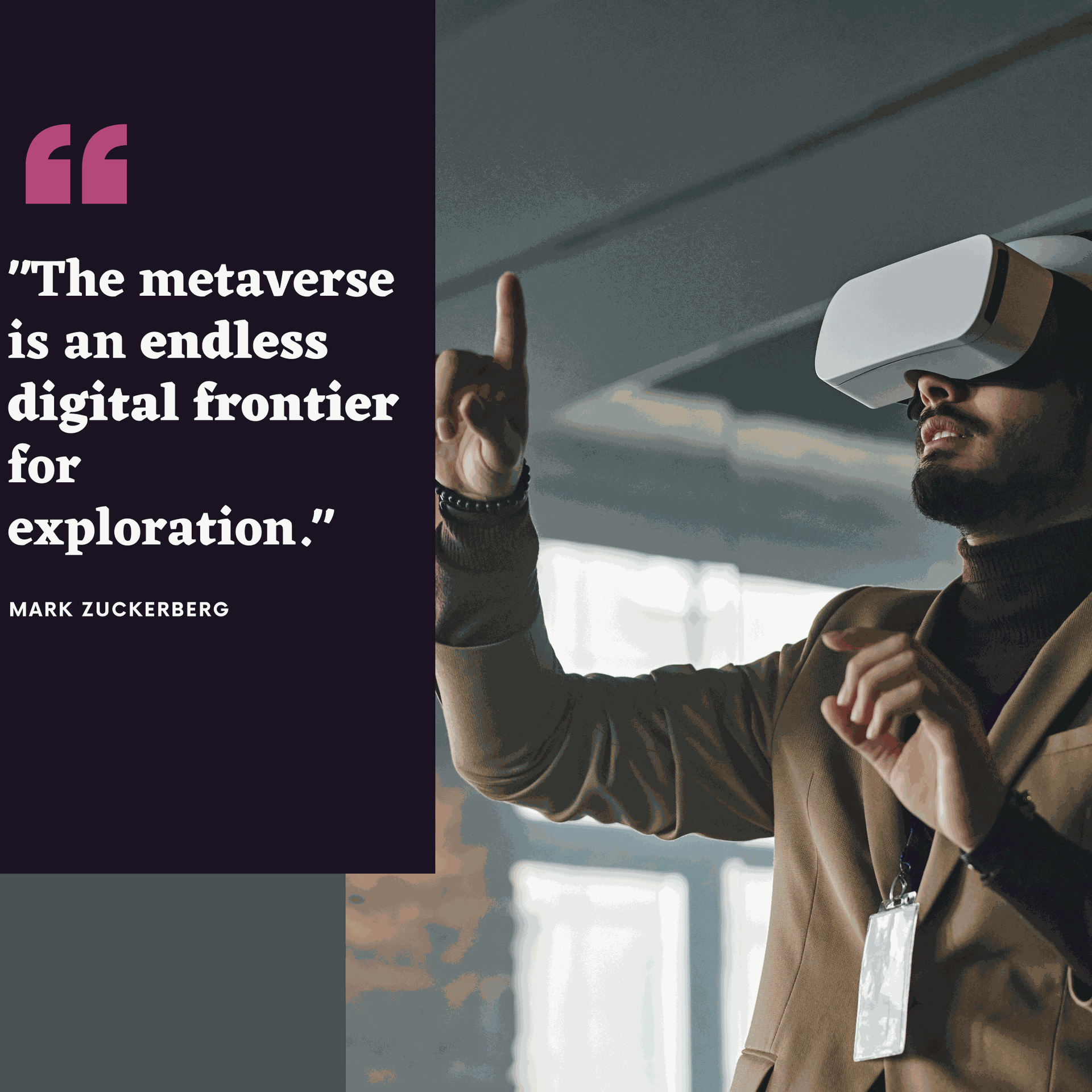Introduction
The “metaverse” is a buzzword that’s everywhere: from boardroom presentations to social media timelines. It represents a network of virtual spaces where users can interact with each other—and digital objects—in immersive ways. With tech giants investing heavily in metaverse platforms, this concept stands at the intersection of gaming, social media, and the future of online interaction.

What Exactly Is the Metaverse?
Imagine a 3D virtual environment that continues to exist even when you’re not logged in—where you can socialize, shop, attend events, and conduct business. In a way, the metaverse is the next evolution of the internet, merging augmented reality (AR), virtual reality (VR), and blockchain technology to create a persistent, shared digital space.
Key Drivers of Metaverse Growth
- Virtual Reality and AR Advancements: Affordable VR headsets and AR-capable devices are making immersive experiences more accessible.
- Blockchain and NFTs: Digital assets and currencies can be owned, traded, and utilized within metaverse platforms, driving new economic models.
- High-Speed Connectivity: Faster internet speeds and lower latency (thanks to 5G and beyond) enhance real-time interactions in virtual spaces.
Why March–April 2025 Feels Different
Just two years ago “the metaverse” was dismissed as hype. Yet market revenue has already doubled in 24 months, hitting ≈ US $203.7 billion for 2025 and still compounding at > 40 % annually. Daily participation is surging too: analysts count ≈ 700 million monthly active users across leading platforms, with Roblox alone topping 85 million DAU in Q1 2025.
Three forces explain the step-change:
| Force | What changed in 2024 | What’s new in 2025 |
|---|---|---|
| Hardware | Meta Quest 3, Apple Vision Pro debut | Lighter, cheaper Vision Pro 2 rumours & VisionOS 2.4 “Apple Intelligence” rollout; accessibility upgrades position headsets for mainstream users. |
| Enterprise Platforms | Pilots inside a few tech giants | Microsoft Mesh GA in Teams, letting any company spin up avatar-based “immersive spaces” from a normal meeting link. |
| Policy & Standards | Fragmented, draft guidance | EU launches a dedicated virtual-worlds strategy covering data-protection and interoperability; similar frameworks now in the works from Japan & the US. |
Tech Under the Hood: Metaverse 2.0
- Spatial-AI Headsets – Vision Pro-class devices blend eye-tracking, LiDAR and on-device generative AI to map surroundings and auto-render photorealistic avatars in real time.
- Edge Rendering & 6G Research – IEEE and EU workshops already prototype terabit-level “6G-metaverse” backbones for ultra-low-latency holography. IEEE ICCCTech Xplore
- Interoperable Avatars & Asset NFTs – Meta, Microsoft, Epic and hundreds of indie studios back the Open Metaverse Alliance (OMA3) file spec so your clothing skin in Fortnite can appear in Decentraland or Mesh.
Five Real-World Case Studies
| Sector | Deployment | Hard Results |
|---|---|---|
| Consulting | Accenture “Nth Floor” VR campus for onboarding & skills labs | 45 000+ hires onboarded; VR cohorts show 75 % faster knowledge retention vs slide-based training. Immersive Learning NewsVorecol |
| Industrial | BMW “Digital Twin Factory” streams live sensor data into a persistent VR replica for remote maintenance | Cut line-change downtime by 30 %. |
| Retail | Meta & Walmart pilot mixed-reality shopping where customers virtually “walk” aisles, fill carts, then schedule home delivery | Average basket value +12 % compared with mobile web. |
| Healthcare (Africa) | South-African nursing schools run VR trauma simulations on low-cost Quest headsets | Student pass-rates rose from 68 % → 88 % in first semester. Frontiers |
| Collaboration | Microsoft Mesh in Teams lets distributed R&D teams white-board CAD models as holograms | Design-review cycle times down 22 %. |
Challenges No One Should Ignore
| Pain-Point | Why It’s Critical Now | Mitigation |
|---|---|---|
| Safety & Privacy | Full-body tracking plus biometrics creates new vectors for harassment & data leaks | Enforce real-time toxicity filters; adopt EU “trusted avatar” verification standards. |
| Hardware Access & Cost | Vision Pro still starts at US $3 499; Quest 3 at $499 but requires imports in many African markets | Subsidise via telcos; explore phone-powered XR viewers; monitor Vision Pro 2 price drop. |
| Platform Fragmentation | Separate avatars, currencies, identity silos | Back OMA3 & W3C wallet standards; design assets in GLTF/USDZ to future-proof. |
| Bandwidth & Latency | 200 Mbps streams choke on 4G | Leverage 5G slicing today, prep for 6G roll-outs (trials start 2028). ericsson.com |
| Carbon Footprint | Always-on worlds burn server watts | Shift to green data-centres; use cloud-based foveated rendering to cut GPU load 60 %. |
2025 Playbook for Business Leaders
- Audit Your “Metaverse-Readiness” Stack – Inventory devices, connectivity, 3D asset libraries, and identity systems.
- Pick a High-Value Pilot – VR onboarding, remote equipment support, or 3D product showcases typically show the fastest ROI.
- Design for Interop from Day 1 – Use open file formats, portable avatars, and wallet-agnostic tokens.
- Build an Internal Governance Charter – Define codes of conduct, privacy policies, and safety escalation paths before launch.
- Measure Two Sets of KPIs – Engagement/Revenue and Sustainability (energy per user-hour, travel miles replaced).
Looking Beyond the Horizon
The headset war will heat up when Meta Quest 4 (likely 2026) arrives with retina-resolution displays and on-device generative avatars—while Apple’s cheaper Vision Pro variant targets the prosumer crowd. On the network side, early 6G trials promise holographic telepresence by 2029. Yet real competitive advantage will belong to companies that treat spatial computing as today’s channel, not tomorrow’s toy.
For African innovators, low-cost headsets, local-language avatars, and cloud-rendered smartphone XR open a once-in-a-generation chance to leapfrog legacy infrastructure—whether in classrooms, clinics, or fashion showrooms.